A few weeks ago, I was quite excited to discover my first common redpolls Acanthis flammea in the backyard. A flock of about 25-30 of these beautiful birds had perched on one of the bent birch trees that were damaged from a previous ice storm that we experienced this season. Before I knew it, as quickly as these birds had shown up, they had taken off back into the woods. I was rather disappointed because I had hoped to have had the chance to photograph them. About a week later, while I was out in the woods photographing black-capped chickadees, I heard what I thought was the voice of an American goldfinch, but it was, in fact, a common redpoll. I believe this bird was female and very energetic. I found it quite difficult to photograph her while she was hopping around in the snow foraging for food. I was able to take a few photographs of her and then she disappeared farther into the woods.
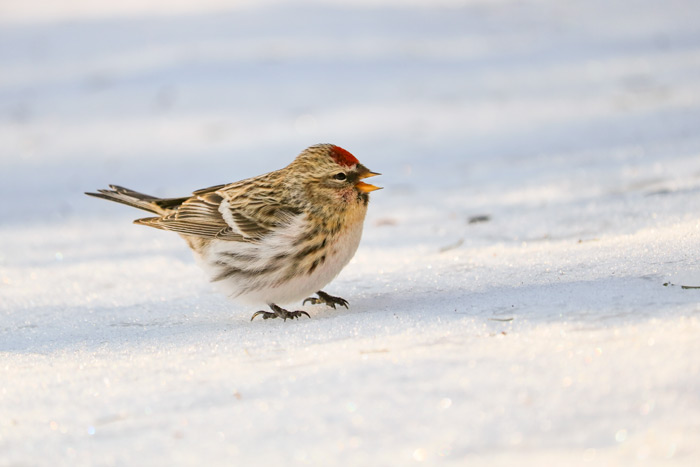

I thought that was going to be my last chance at observing these species of birds until a couple of days ago. It seems word has spread among this species about the black sunflower seeds I have available at the feeders. I now have about seven common redpolls coming to the feeders on a regular basis. They were hanging around on the ground at first, picking up the stray black sunflower seeds that had fallen. Now, they are feeding from the feeders along with my other frequent bird visitors. There is one in particular that has become quite feisty while in one of the hanging tray feeders. I believe this bird is a young male. He sits in the middle of the feeder and won’t let the other birds anywhere near the food. He has given my spoiled black-capped chickadees Poecile atricapillu a run for their money. I have since put out a couple of extra feeders to help bring harmony and balance back to the area. After doing a little research, I learned that these birds are fond of millet and thistle or nyjer seed at feeders. In the next few weeks, I hope to purchase a bag of Nyjer and the special mesh feeder required for this type of seed. Species of birds that eat Nyjer include American goldfinches Spinus tristis), indigo buntings Passerina cyanea, song sparrows Melospiza melodia, mourning doves Zenaida macroura, and of course, my new visitor, the common redpoll. Other species of birds, such as woodpeckers, thrushes, and chickadees, may try Nyjer when it is offered. I hope this will be a treat for my frequent visitors as well as myself. I hope it will attract new species of birds.
I would like to share a few facts about the common redpoll. In the future, I hope to share more photographs of these vibrant finches and keep you updated on their progress at the feeders in the up-and-coming weeks. Perhaps, with the onset of spring, the weather will bring new arrivals of bird species in the yard and at the feeders as well.

Common redpolls are one of the “winter finches.” These finches are small songbirds with small heads and small pointed bills for seed-eating. Their tails are short with a small notch at the tip.
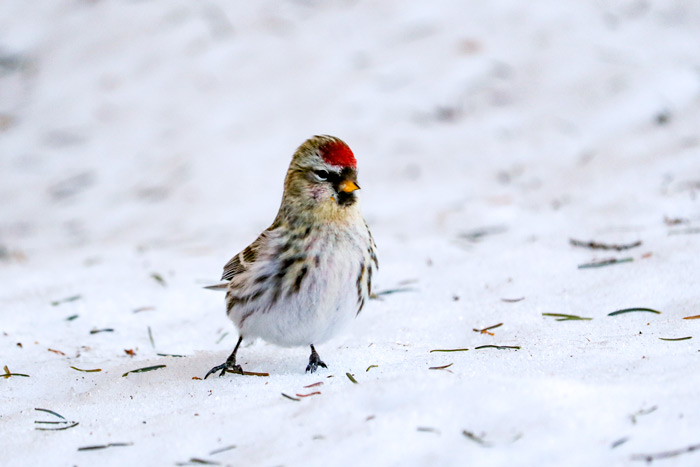
The common redpoll is a brownish-grey finch with a dark face and dark streaks on the flanks. The forehead has a bright pink-red patch. It has a black bib and two pale stripes on the wings. There are black feathers around a yellow-colored bill. The breast of the males is pale red as well as the upper flanks.
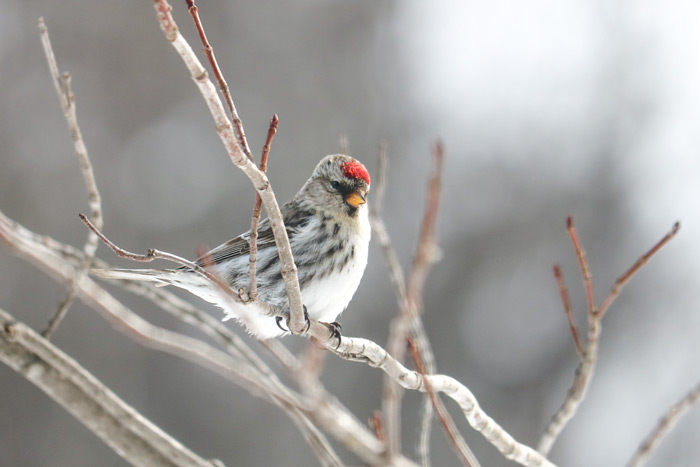
Common redpolls travel in flocks of up to several hundred birds. They move energetically, foraging for seeds in weedy fields or small trees for a moment and then swirl away in a mass of chattering birds in the next. The song of the common redpoll consists of short, repeated notes of mainly call notes given in a long string, lasting up to half a minute. Their buzzy zap and rising dreeee calls are very distinct.
These birds will form vocal, chattering flocks indicated by three main calls: a chatter of several sharp, zapping notes; a nasal, rising whistle lasting nearly half a second, and a rattle or trill that lasts nearly a second.
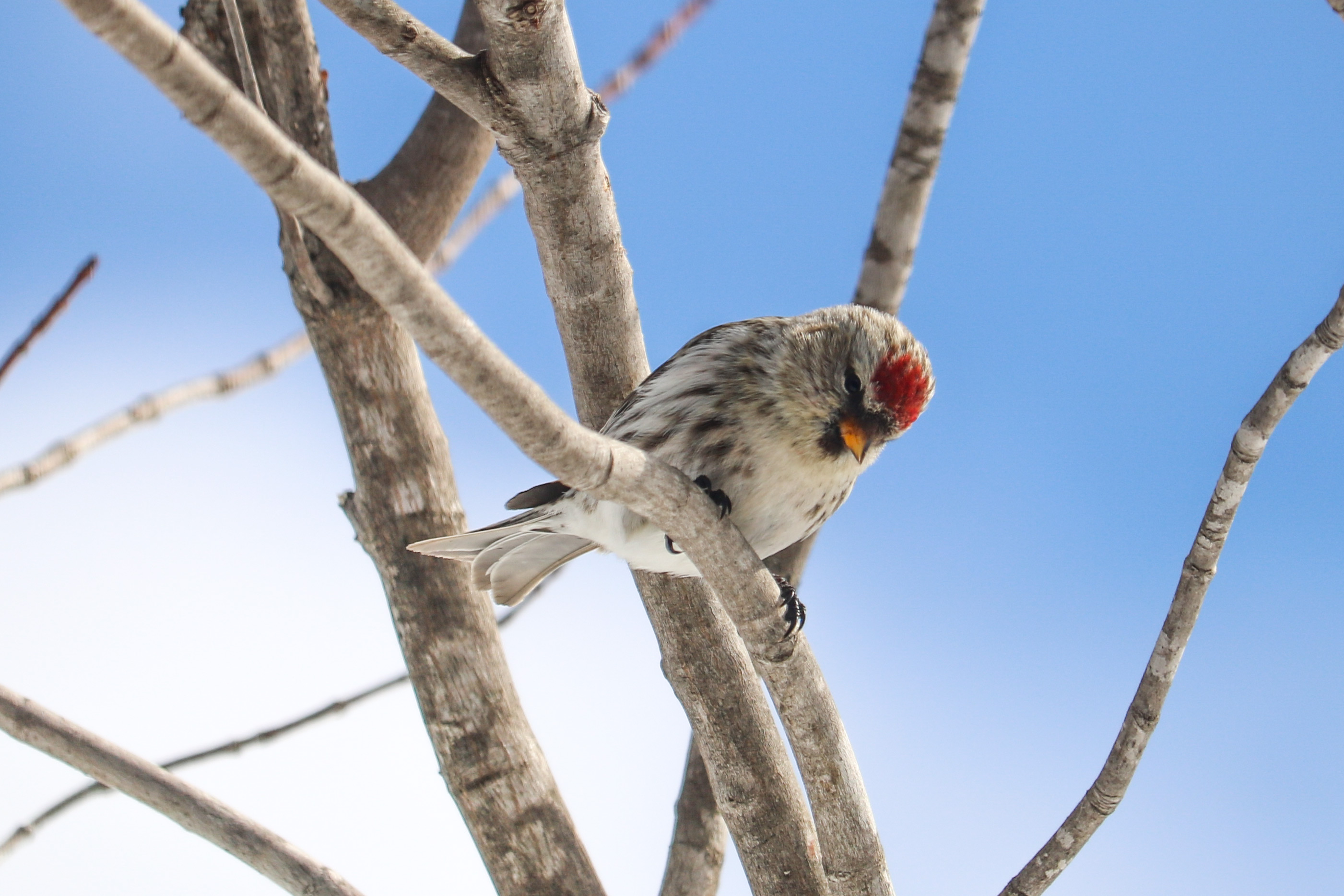
In northern areas, common redpolls range from willow flats to open weedy fields, to open conifer woods.

These small birds have the ability to survive very cold and frigid temperatures. They may be driven southward due to a shortage of food sources, not by cold weather. During this time, these birds can be found frequenting backyard bird feeders
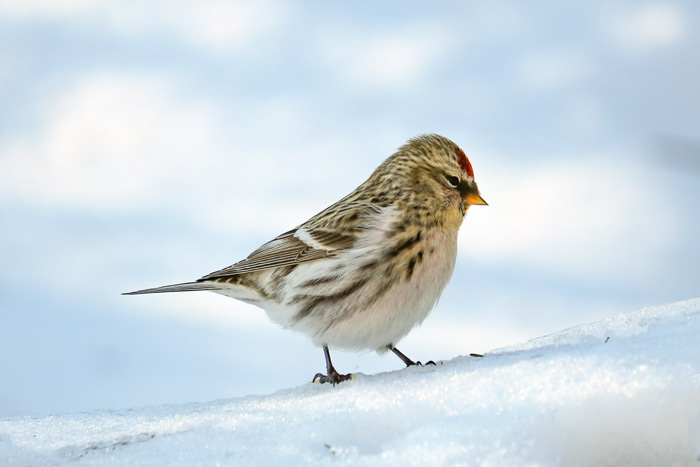
Common redpolls actively forage in flocks, except when nesting. These birds will forage in trees, shrubs, and weeds as well as on the ground. They have a pouch within the throat where food can be stored for up to several hours at a time. This practice allows the bird to seek and consume food out in the open in a rapid manner. The bird can then digest its food slowly and utilize its food over a longer period while it is resting.
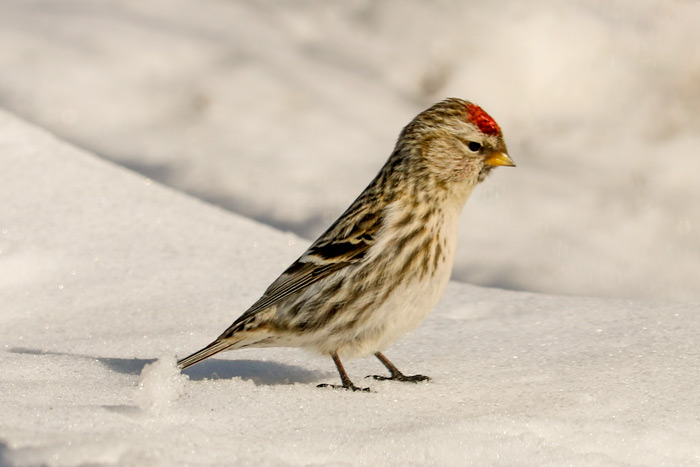
The diet of the common redpoll consists of mostly seeds, vegetable matter, and then insects in the summer. This includes catkins, seeds, and buds of willows, alders, and birches, small conifer seeds, as well as the seeds of many weeds and grasses.
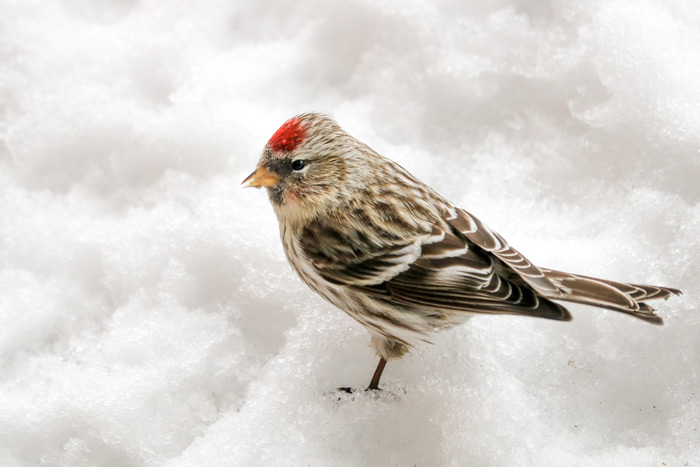
Prior to the breeding season, males will dominate in winter flocks. As the breeding season approaches, females become more dominant and may take the lead during courtship.
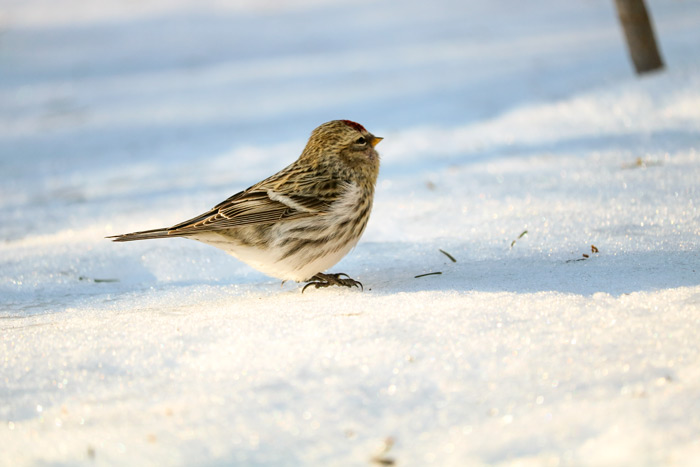
Nests are usually very well hidden and constructed in dense low shrubs only within a few feet of the ground. Nests are most likely built by the female and can consist of an open cup of fine twigs, grass, moss, lined with feathers, plant down, or animal fur.
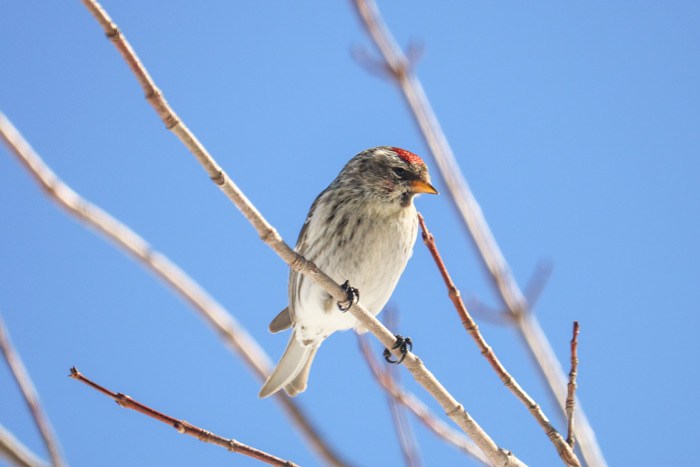
The female will lay four to five pale green to blue-green, with purplish to reddish-brown spots often concentrated at the larger end of the egg. Only the female incubates the eggs, usually for about ten to eleven days. The male will feed the female during this time. The young are fed mostly by the female; male contribution will vary.
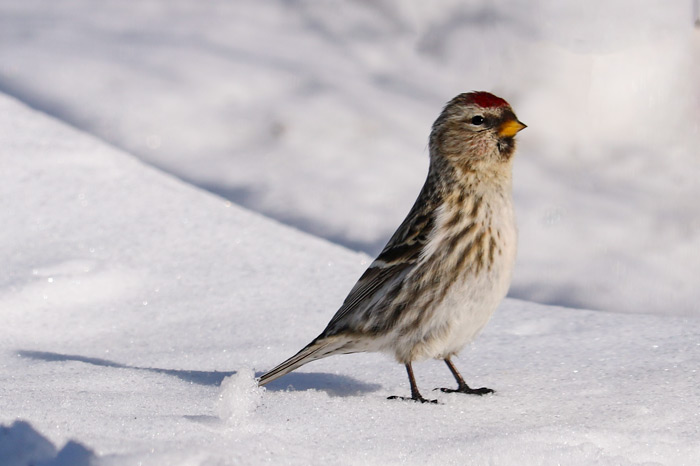
Fledglings leave the nest about twelve days after hatching.

Common redpolls are considered irruptive migrants. During the winter when food sources are less available in Canada, these birds will move south into the northern states to find food. These birds move southward in the late autumn and northward again in March and April. This flight is called an irruption year for these winter finches.
The range of the common redpoll typically extends through northern Europe and Asia to northern North America, Greenland, and Iceland.
Resources used for this post:
allaboutbirds.org, audubon.org & The Sibley Guide to Birds
Leave a Reply